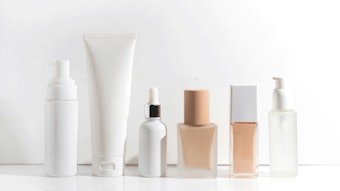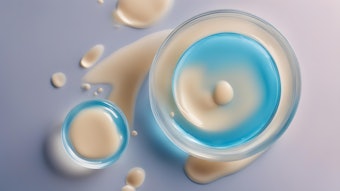In an April 2014 paper published in Contact Dermatitis, authors de Groot and Roberts reviewed the UV absorber/SPF booster octocrylene for its potential to cause photo contact allergy. According to the article abstract, this ingredient was introduced 15 years ago and is now widely used in sunscreens and cosmetics. However, in the past 10+ years, studies from France, Belgium, Spain and Italy have reported increasing numbers of patients experiencing photocontact allergy to octocrylene; mainly adult patients who have previously used topical products containing the anti-inflammatory drug ketoprofen.
This stirred some reaction from cosmetic R&D members, who discussed this subject on a LinkedIn Group for the Society of Cosmetics Scientists in the UK. Comments included what other materials ketoprofen-sensitive consumers may react to; whether a patch test should be required for sunscreen products; and the suggestion that a warning be listed on products containing octocrylene.
Earlier research published in 2010, by M. Avenel-Audran et al. in the Archives of Dermatology, also had found octocrylene to be a strong allergen with the potential to cause contact dermatitis in children and photoallergic contact dermatitis in adults having a history of photoallergy to ketoprofen. This paper also observed that adult patients frequently presented with positive photopatch test reactions to octocrylene. The authors of this study noted, "These patients need to be informed of sunscreen products containing octocrylene, benzophenone-3 or fragrances."
However, in a related consumer blog by industry scientists, a post from 2011 reminded consumers that, as with all sunscreens, octocrylene has been thoroughly tested and approved. In the United States, octocrylene is considered safe for use up to 10% by the U.S. Food and Drug Administration (FDA). The European Union allows its use up to 10%, while Health Canada allows a maximum 12%.
While a minority of consumers treated using ketoprofen have patch-tested positive for octocrylene allergy, the real concern stems from the increasing frequency of reported reactions—although from this author's view, it is unclear whether this increase is due to issues with octocrylene, its increased use, or perhaps an increased use of ketoprofen. As with any ingredient concern, however, it's only time before the ingredient is vilified, leading to the demand for an alternative. Now sure seems like a good time for the FDA to speed its approval of new UV filters.






!['[Sunscreen] developers will be able to innovate more efficiently while maintaining high standards of quality and safety for consumers.'](https://img.cosmeticsandtoiletries.com/files/base/allured/all/image/2024/06/woman_outside_using_sunscreen_on_face_ISO_test_standards_AdobeStock_783608310.66678a92029d9.png?auto=format%2Ccompress&fit=crop&h=191&q=70&rect=62%2C0%2C2135%2C1200&w=340)


